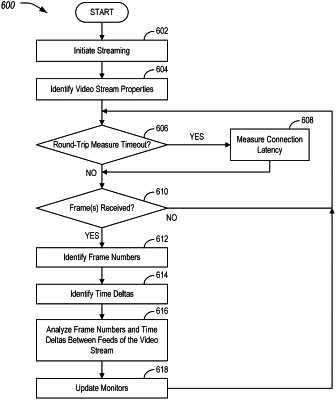| CPC H04N 17/00 (2013.01) [G05D 1/0038 (2013.01); H04L 43/045 (2013.01); H04L 65/80 (2013.01); H04N 7/181 (2013.01); B60R 2300/20 (2013.01)] | 16 Claims |

|
1. A system for monitoring a vehicle, comprising:
a monitoring system having one or more monitors, the monitoring system configured to communicate with a vehicle over a network and programmed to
receive a plurality of video feeds captured from cameras of the vehicle, each of the plurality of video feeds including a plurality of frames, each of the frames of each of the video feeds being assigned a sequence number that increases for each successive frame;
analyze the sequence numbers to identify missing frames, delayed frames, or stale frames;
display, to the one or more monitors, the plurality of video feeds, the sequence numbers corresponding to the displayed frames, and for each of the plurality of video feeds, indications of whether any missed frames, delayed frames, or stale frames were identified, wherein a stale frame is a frame with a lower frame number than another previously received frame for the same video feed;
receive remote driving commands from an operator of the monitoring system based on the indications of whether any missed frames, delayed frames, or stale frames were identified; and
send the remote driving commands from the monitoring system to the vehicle.
|